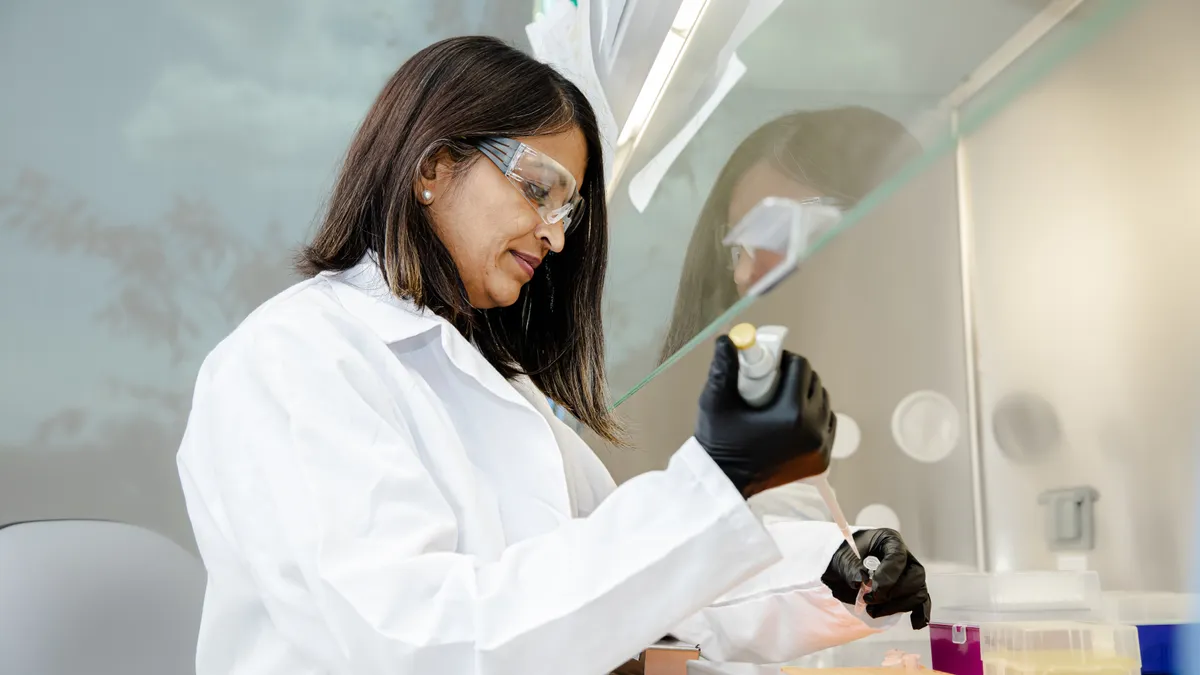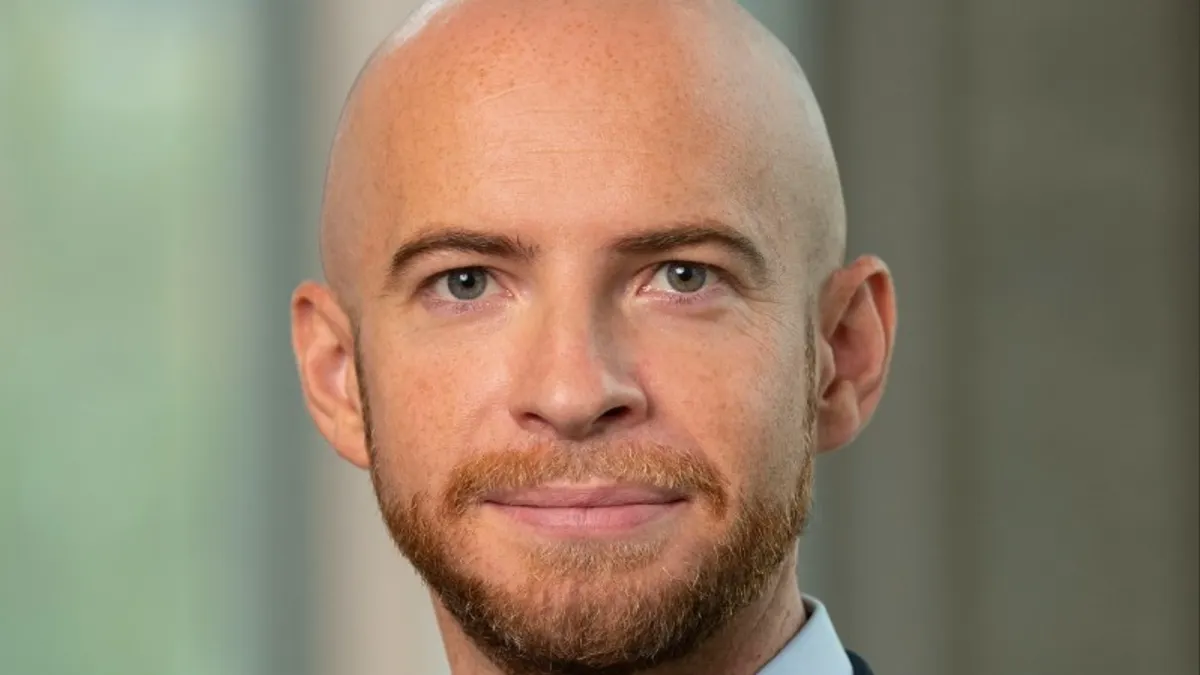Seven years ago, Rocket Pharmaceuticals was operating from a back conference room at a hedge fund in New York City, hoping to maybe get one or two innovative ideas to an IND. Today, the clinical-stage public biopharma focused on rare and ultra-rare childhood diseases is in a 100,000-plus-square-foot R&D and lab facility in Cranbury, New Jersey, with six genetic therapies in its pipeline, two of which are being readied for FDA submission this year.
Kinnari Patel, COO and president, who was Rocket employee No. 3, attributes the company’s success to following “good science.”
“We believe that we don't know everything, and we need experts at the table to ask questions to and collaborate with and learn from. It’s a humble approach to drug development,” Patel, a PharmaVoice 100 honoree, said. “While all of us had done multiple drug development (programs) at Big Pharma before coming here, we realized we were entering a new territory in cell and gene therapy. But the core of our success has been working hand in hand with patients and patient communities.”
Rocket pushed past several roadblocks for one of its two lead compounds — LV RP-L201 — for leukocyte adhesion deficiency, an aggressive and fatal inherited immunodeficiency disease that affects 800 to 1,000 patients patients in the U.S. and Europe. in the U.S. and Europe. Based on positive early data, Rocket engaged with investors, academia and patient groups to move the development program forward. The company even worked with the U.S. embassy during the COVID-19 pandemic to grant an exemption to a patient who otherwise would have been excluded from the study and who would have died.

“Each of those patients’ lives depends on a therapy,” Patel said. “We worked with patient communities and experts around the world to get patients in the study and with FDA and EMA to design a study that was meaningful.”
Less than five years from first patient treated to top line data, Rocket submitted an IND for LV RP-L201 in 2018. Based on the positive efficacy and safety data from the phase 2 pivotal trial, Rocket anticipates a regulatory filing for the ex vivo lentiviral gene therapy candidate in the second quarter of 2023.
“For all nine patients, we have a 100% survival rate and zero patient hospitalizations post-therapy,” Patel said. “As a pharmacist, I've never seen that anywhere. They can be kids again, go to day care, go to school, get their ears pierced. To see this amazing product come to more patients next year feels like we are on the right mission of making rare disease therapies available to patients who really need them. This was a labor of love.”
Rocket is also bullish on its other lead product called RP-L102, an ex vivo lentiviral gene therapy candidate for Fanconi anemia (FA), which is a rare pediatric disease “characterized by bone marrow failure, malformations and cancer predisposition” — the disease often leads to death before patients reach the age of 10. Again, working with leading experts around the globe, regulators and patient advocacy groups, Rocket is preparing to submit its second drug to the FDA for approval later this year.
“We believe that we don’t know everything, and we need experts at the table to ask questions to and collaborate with and learn from.”

Kinnari Patel
COO, president, Rocket Pharmaceuticals
“Fanconi anemia is a disease that we all learn about in medical school and pharmacy school because the cell and biology is so challenging,” Patel said. “DNA repair is really the core of the issue for this disease, but despite tons of research, people weren't able to figure out a treatment.”
Rocket’s approach is to take a patient’s cells and genetically modify them to correct the bone marrow cells as a preventative measure before failure.
“We take patients’ cells, infuse them ex vivo and give them back to the patients within a week. And we are seeing (a) clean safety profile because they don't have any condition regimen,” Patel explained. “These patients are doing great and the patient community is so excited about this because it impacts 5,000 to 7,000 patients around the U.S. and Europe.”
“It's going to be really meaningful to get both of these unique therapies to patients,” she continued. “For us, it's a way to show that we can take an idea from discovery to patients commercially. And, hopefully, we can do this over and over again for bigger and more devastating severe diseases.”
Here, Patel discusses Rocket’s secret sauce in evolving from a discovery company to a commercial organization, the potential for real individualized medicine and a macro view of the cell and gene therapy market.
This interview has been edited for brevity and style.
PHARMAVOICE: What’s been the key to your success of going from an early drug discovery company to marshaling candidates through the pipeline and now preparing them for market launch?
KINNARI PATEL: Patients are our North Star. We always think about how we can bring these therapies to patients ourselves in a better, more effective fashion. We have to do it; that's the sense of responsibility we all have. We recently hired a chief commercial officer who has worked in rare diseases before. We've hired (a) team of people who have worked in ex vivo, cell therapy, gene therapy, AAV therapies so we have the right experts at the table to advise us. We're getting everything in place because patients can't wait. And from a payer perspective for us, the value proposition is clean cut. If a patient who may have passed away by the age of 2 or led a single-digit life, lives a normal life, and is not in and out of hospitals and emergency rooms five, six, seven times a year, that’s a huge difference we're providing. We think it makes sense. And payers will support it, just like the health authorities and experts on the field have supported these programs.
We think when you go after indications that are truly rare (and) can prove significant amendments to medical need from a scientific perspective by targeting the gene or the cell of interest that's causing the harm, then we can see the clear risk benefit. And we're hoping all of these things come together really nicely next year.
Rocket has both an ex vivo and an AAV platform. How are you managing the pace of scientific discovery and is it moving too fast?
That depends on who you ask. Some people would say science is moving so fast if you're doing ex vivo, which will lead to gene therapy, and with AAV you're potentially providing a cure with a one and done therapy. That's the potential of these therapies. When we're in the middle of everything, we know we need to do more. We think the science is at the perfect place where we can get to individualized medicine. When we first talked years ago, we were talking about personalized medicine. Now we're thinking (of) individualized medicine and that's a great place to be.
Is individualized medicine possible and scalable?
We want to make it doable. And we want to make it scalable. The way we've done it is by having multiple programs in the pipeline. This gives us a platform synergy so we can more effectively negotiate costs. We've negotiated contracts that allow synergies for our ex vivo lead programs. On the flip side, for AAV we decided to bring that manufacturing in-house. I never thought I'd be doing manufacturing let alone building out a facility. At the end of last year, we did two successful productions in-house. The science and advancements we were able to immediately harvest and put into our system in a quicker fashion and optimize products make us think if we can keep optimizing our productions, the quality of the product, our output, we can absolutely make it scalable for patients.
“One child reported that he couldn't walk a few feet, and after gene therapy he did a 10k with his dad to raise awareness for the disease. The impact we've seen with this therapy was amazing.”

Kinnari Patel
COO, president, Rocket Pharmaceuticals
Recently you made a pretty bold statement that you're the only company demonstrating safety and efficacy using AAV gene therapy targeting cardiac conditions.
Five years ago, we licensed the Danon disease program — AAV RP-A501. Unfortunately, the boys who are impacted by this disease pass away on average by the age of 19 or 20 if they don't receive a heart transplant, and even if they receive a heart transplant, their survival increases by maybe five years or so. There are a lot of complications. So, we saw this as a severe unmet medical need. When we were thinking about licensing this program to take it to the clinic, we faced two hurdles. People told us we are (an) ex vivo company, you can't do AAV. We said, wait, we have three ex vivo programs. We are (a) company started by drug developers. We know we can bring in the right platforms with the right science with the right experts to the table. So, we said why not? The second thing that we got a lot of push back on is that other companies have tried gene therapy in cardiac and they've all failed. The AAV therapies at the time were either for infants or direct injection. Our challenge was how to treat a 19-year-old and do it safely. Those were some of the challenges we faced. And it hasn't been an easy road from a drug development perspective. We've learned a lot — patient by patient we keep learning, optimizing, going back in and working with FDA to make sure that every patient is safely and effectively treated. Last year, we released our phase 1 data that demonstrated a clear benefit risk across a majority of the patients — patients who are still in the clinical study and living a normal life. It's been remarkable. One child reported that he couldn't walk a few feet, and after gene therapy he did a 10k with his dad to raise awareness for the disease. The impact we've seen with this therapy was amazing.
We only made that statement after we saw the data, and for us we see it as a gateway. If gene therapy could work for Danon disease, it can work for so many other cardiac diseases. And as we know, cardiac diseases are so devastating. So, we've actually added two more programs to our pipeline.
Where do you see the entire gene and cell therapy category going?
The cell and gene therapy sector market, unfortunately, is subject to conditions that we can’t control. While it's a challenging time, cell and gene therapy is here to stay and it's the future of treating diseases and rare diseases. There are 7,000 or so rare diseases that are genetic in origin, but these concepts can be applied to diabetes and hypertension. I think it's absolutely necessary for us to not only de-risk programs as we move (to) bigger and bigger diseases, but also to make them affordable. So, all the patients around the world have access, not just patients who can afford them in the U.S. and Europe. That’s Rocket’s ambition, and the only (way) we can achieve that is to work in the ecosystem and help the entire field advance and share knowledge together.
















